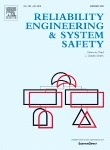Journal
Please choose volume & issue:
-
A novel speech-act coding scheme to visualize the intention of crew communications to cope with simulated off-normal conditions of nuclear power plants
Abstracts:Many researchers have commonly pointed out that the characteristics of crew communications is one of the most important factors affecting the operation safety of complicated process control systems. From this concern, a couple of speech-act coding schemes were developed from the point of view of ‘what was done by crew members?’ In this study, a novel speech-act coding scheme was developed, which allows us to see the contents crew communication from a different angle – ‘what was the communication intention of crew members?’ To this end, the communication contents uttered by MCR operators who were faced with various kinds of simulated off-normal conditions were collected from the full-scope simulator of domestic NPPs. Then, the novel speech-act coding scheme was developed by involving additional yardsticks (such as
Means, Acceptance criteria , andConstraints ), which are useful for elucidating the nature of communications from a task description perspective. As a result, the novel speech-act coding scheme was proposed, which consists of 45 behavioral task categories and the associated definitions. Although the novel speech-act coding scheme proposed in this study is still a preliminary version, this would be a good starting point to enhance the quality of crew communications through visualizing their communication intentions. -
Finding minimum node separators: A Markov chain Monte Carlo method
Abstracts:In networked systems such as communication networks or power grids, graph separation from node failures can damage the overall operation severely. One of the most important goals of network attackers is thus to separate nodes so that the sizes of connected components become small. In this work, we consider the problem of finding a minimum
α -separator, that partitions the graph into connected components of sizes at mostαn , wheren is the number of nodes. To solve theα -separator problem, we develop a random walk algorithm based on Metropolis chain. We characterize the conditions for the first passage time (to find an optimal solution) of our algorithm. We also find an optimal cooling schedule, under which the random walk converges to an optimal solution almost surely. Furthermore, we generalize our algorithm to non-uniform node weights. We show through extensive simulations that the first passage time is less thanO (n 3), thereby validating our analysis. The solution found by our algorithm allows us to identify the weakest points in the network that need to be strengthened. Simulations in real topologies show that attacking a dense area is often not an efficient solution for partitioning a network into small components. -
Towards the development of a system-theoretic model for safety assessment of autonomous merchant vessels
Abstracts:As the initiatives to develop and implement autonomous merchant vessels into the global shipping industry are gaining momentum, their safety remains in the spotlight. It is argued that every effort shall be taken to ensure that the safety of maritime transportation is not reduced in the process, but the question of how to achieve it remains open. Meanwhile, the systemic approach is more widely being used to analyse innovative systems’ safety. We therefore apply a System-Theoretic Process Analysis to develop a model suitable for safety analysis and design recommendations’ elaboration for future autonomous vessels. Furthermore, we introduce a method of evaluating and communicating uncertainties pertaining to the method. The results indicate that the system-theoretic safety analysis’ outcome can be affected by manageable uncertainties despite the fact that the system in question is yet to be implemented.
-
Generalized aging intensity functions
Abstracts:A family of generalized aging intensity functions is introduced and studied. The functions characterize lifetime distributions of univariate positive absolutely continuous random variables. Further on, the generalized aging intensity orders are defined and analyzed.
-
Reliability evaluation of unrepairable k-out-of-n: G systems with phased-mission requirements based on record values
Abstracts:In this paper, the reliability evaluation problem for
k -out-of-n : G phased-mission systems with imperfect fault coverage is studied. The system is composed ofn identical components, and the mission consists of multiple, consecutive, and non-overlapping phases. Each phase of the mission has a specified requirement of the minimal number of working components, and therefore the system forms a certaink -out-of-n : G system at the phase. The failure distributions of the components are affected by working circumstance of the mission phases, and the degradation accumulates with the phases for each component. The formulas for computing the state probabilities of the system at different phases and the overall mission reliability are derived with the consideration of imperfect fault coverage for the components. The explicit expression of mission reliability is presented for the phased-mission systems with the same components requirements for all phases. In numerical examples, not only the mission reliability of the system is calculated, but also the optimal number of components is obtained to maximize the reliability for a given phased mission system. -
A control-guided failure restoration framework for the design of resilient engineering systems
Abstracts:When failures are inevitable, a resilient system is expected to restore ideal performance in a timely manner. The resilience of a system can be improved by enhancing the post-failure restoration ability of the system. In order to determine whether resilience in a system is sufficient towards a certain failure, a set of design parameters and performance equations describing the system behavior are essential in performing a resilience assessment. However, in implicit system applications, one of the main concerns is that there are no clearly defined system equations to describe system performance. To overcome this challenge, this paper presents a control-guided failure restoration (CGFR) framework, which combines dynamic system modeling and resilience analysis. Since there are no clearly defined system equations in implicit systems, the dynamic system modeling in the proposed framework is equipped with an artificial neural network to learn system behaviors. To demonstrate the feasibility of the proposed approach, a power transmission system is employed as a case study. The presented study aims to encourage the development of advanced failure restoration strategies for resilient engineered systems.
-
Reliability-based sensitivity estimators of rare event probability in the presence of distribution parameter uncertainty
Abstracts:This paper aims at presenting sensitivity estimators of a rare event probability in the context of uncertain distribution parameters (which are often not known precisely or poorly estimated due to limited data). Since the distribution parameters are also affected by uncertainties, a possible solution consists in considering a second probabilistic uncertainty level. Then, by propagating this bi-level uncertainty, the failure probability becomes a random variable and one can use the mean estimator of the distribution of the failure probabilities (i.e. the “predictive failure probability”, PFP) as a new measure of safety. In this paper, the use of an augmented framework (composed of both basic variables and their probability distribution parameters) coupled with an Adaptive Importance Sampling strategy is proposed to get an efficient estimation strategy of the PFP. Consequently, double-loop procedure is avoided and the computational cost is decreased. Thus, sensitivity estimators of the PFP are derived with respect to some deterministic hyper-parameters parametrizing a priori modeling choice. Two cases are treated: either the uncertain distribution parameters follow an unbounded probability law, or a bounded one. The method efficiency is assessed on two different academic test-cases and a real space system computer code (launch vehicle stage fallback zone estimation).
-
Evaluation of preconditions affecting symptomatic human error in general aviation and air carrier aviation accidents
Abstracts:Human error remains the leading cause of accidents in the aviation industry, as technological reliability and system safety have undergone significant improvements. Improved methods are required to model the events resulting in human error incidents. In this study, aviation accident data are evaluated to model the association between the latent and symptomatic causal factors resulting in aviation mishaps. We comparatively analyze National Transportation Safety Board accident data for general aviation and air carrier pilots in order to evaluate potential causal factors. The demonstrated methodology leverages previous work in causal relationships by using multiple-variable logistic regression to model the relationships among latent causal factors, symptomatic causal factors, and accident severity. The Human Factors Analysis and Classification System is applied to define a framework intended to identify focal areas for the safety community to mitigate similar future system failures. The results demonstrate an effective methodology for evaluating the quantitative relationships between symptomatic and latent causal factors, which are not readily apparent based solely on occurrence rates. Furthermore, the results also clarify the differences in causal factors between the selected general aviation and air carrier pilot operations. The usefulness of the framework, transferability to other domains, and possibilities for future research are discussed.
-
Application of shutdown probabilistic safety assessment
Abstracts:Shutdown probabilistic safety assessment represents an extension of probabilistic safety assessment performed for other plant operating states, excluding power operation, which is covered in probabilistic safety assessment.
-
A stochastic process based reliability prediction method for LED driver
Abstracts:In this study, we present a general methodology that combines the reliability theory with physics of failure for reliability prediction of an LED driver. More specifically, an integrated LED lamp, which includes an LED light source with statistical distribution of luminous flux, and a driver with a few critical components, is considered. The Wiener process is introduced to describe the randomness of lumen depreciation. The driver's survival probability is described using a general Markov Chain method. The system compact thermal model (physics of failure model) is developed to couple with the reliability methods used. Two scenarios are studied: Scenario S1 considers constant driver's operation temperature, while Scenario S2 considers driver's temperature rise due to lumen depreciation. It has been found that the wide life distribution of LEDs will lead to a large range of the driver's survival probability. The proposed analysis provides a general approach for an electronic system to integrate the reliability method with physics models.
Hot Journals
- Risk Breakdown Matrix for Risk-Based Inspection of Transportation Infrastructure Projects
- Social Control in Outsourced Architectural and Engineering Design Consulting Projects: Behavioral Consequences and Motivational Mechanism
- 2022 Best Paper Award
- Hold-Ups and Failures in Negotiated Order: Unearthing the Nuances of Rework Causation in Construction
- Prevalence and Risk Factors for Poor Mental Health and Suicidal Ideation in the Nigerian Construction Industry
- CFRP–Cable-Stayed Bridge Hybrid with Partial Suspension and a Span Exceeding 3,000 m: Concept, Optimization, and Construction
- Impact of Wind Load Characteristics on Computed Bridge Stay-Cable Forces Used for Bridge Health Monitoring
- Weak-End and Frequency Detection of Elastically Supported Bridges by Contact Residual Response of Two-Axle Test Vehicle in a Round Trip
- Development of Performance-Based Fragility Curves of Coastal Bridges Subjected to Extreme Wave-Induced Loads
- An Analytical Model to Evaluate Short- and Long-Term Performances of Post-Tensioned Concrete Box-Girder Bridges Rehabilitated by an Ultrahigh-Performance Concrete Overlay
- Three-Dimensional Velocity Distribution in Straight Smooth Channels Modeled by Modified Log-Law
- Experimental Investigation on Flow Past Two and Three Side-by-Side Inclined Cylinders
- An Experimental Investigation of Rotor–Box Aerodynamic Interaction 1
- Modeling Gas–Liquid Flow Between Rotating and Nonrotating Annular Disks
- Entry Length Requirements for Two- and Three-Dimensional Laminar Couette–Poiseuille Flows
Advanced Materials (3,745)
- Structured Perovskite Light Absorbers for Efficient and Stable Photovoltaics
- Strategies for High‐Performance Solid‐State Triplet–Triplet‐Annihilation‐Based Photon Upconversion
- Atomic Engineering Catalyzed MnO2 Electrolysis Kinetics for a Hybrid Aqueous Battery with High Power and Energy Density
- Crystal Adaptronics: Global Performance Indices for Dynamic Crystals as Organic Thermal Actuators (Adv. Mater. 20/2020)
- Enlightening Materials with Photoswitches
Acta Astronautica (1,768)
- Mixed-integer trajectory optimization with no-fly zone constraints for a hypersonic vehicle
- Adaptive control design for active Pogo suppression of large strap-on liquid launch vehicles
- Machine learning based approach for modeling and forecasting of GPS–TEC during diverse solar phase periods
- Effect of two-dimensional micro-cavity surface on hypersonic boundary layer
- Investigation on burning behaviors of aluminum agglomerates in solid rocket motor with detailed combustion model








 User Center
User Center My Training Class
My Training Class Feedback
Feedback





